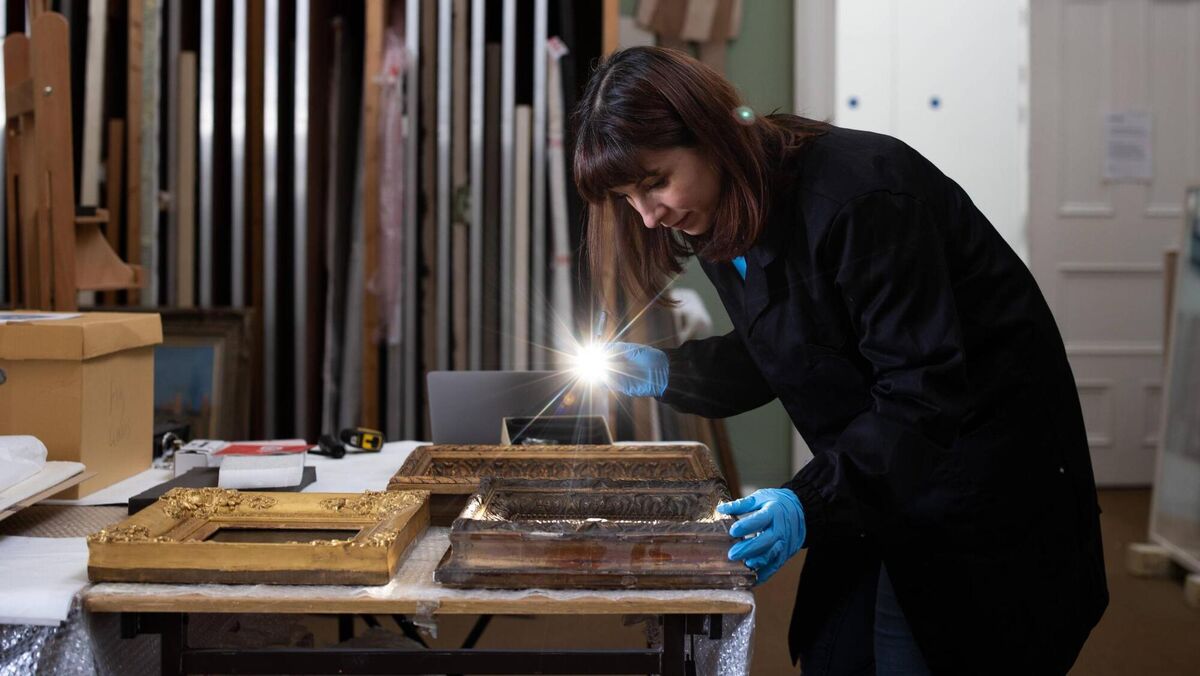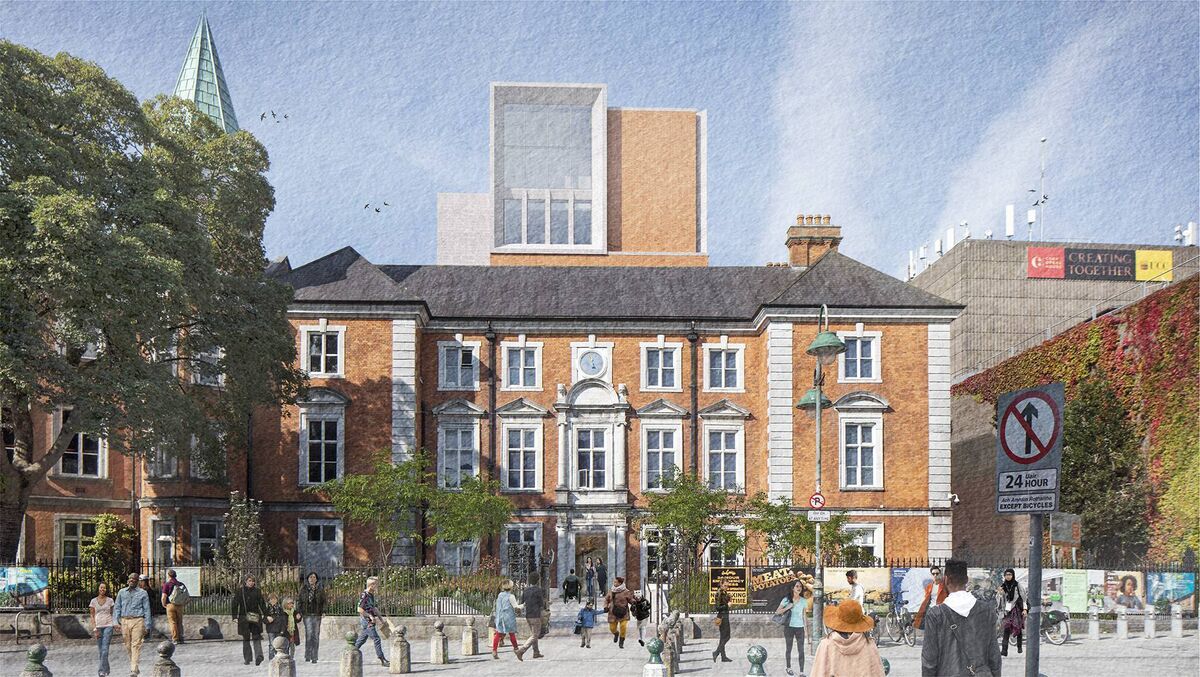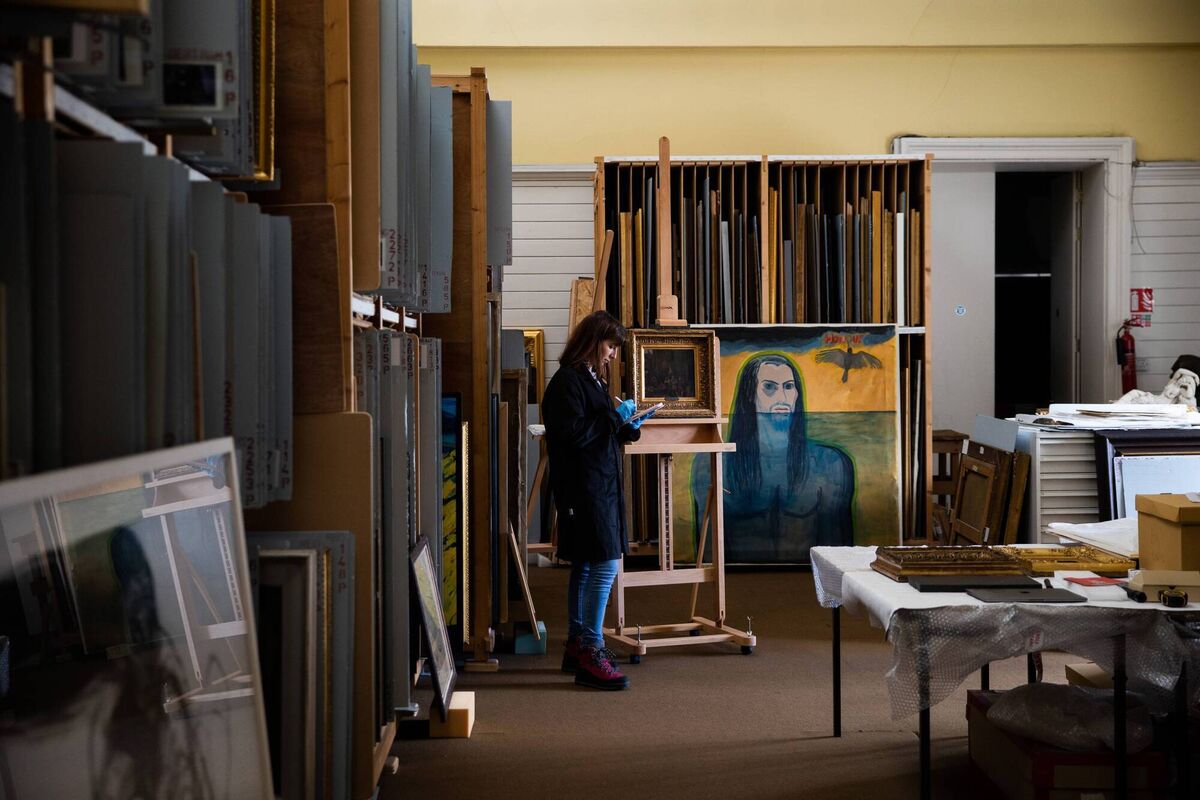Behind the Scenes at Crawford Art Gallery: Chiara Chillè, art conservator

Chiara Chillè, painting conservator, at work at Crawford Art Gallery. Picture: Clare Keogh
My name is Chiara Chillè, and I am an Italian freelance painting conservator. My job is to take care of artworks so they can last for generations to come.
I began working with Crawford Art Gallery in Cork City in January of this year, and I am delighted to be working in a museum full of thousands of stunning artworks, each with its own unique story to tell.
The Crawford Art Gallery has traditionally relied on external consultants and conservators to help with conservation needs, as the gallery had no conservation lab or equipment.

But the gallery is about to make a huge move: to prepare for renovations and upgrades to the building that are planned for 2025 and 2026, the entire collection of over 3,000 artworks is going to slowly be moved into secure storage between now and the end of this year.
The gallery is open as normal until the autumn, with all this work going on behind the scenes, so it won’t become obvious to our visitors until the beginning of summer.
As a conservator and part of the decant project team, it's my responsibility to ensure that each piece is carefully inspected and evaluated for conservation needs before it is moved.
Once the artworks are thoroughly evaluated, they will be packed using standard conservation methods to ensure their safety during transportation and storage. The packing methods may vary depending on the type of artwork, the methods can range from the use of cushioning foam sheets and polyethylene sheets (soft-wrapping) to more rigid wooden structures that secure the artwork these are known as T-frames. I am collaborating with the technicians in doing this.
Currently, some of the rooms at Crawford Art Gallery have been closed off and are being used for packing. But once the artworks are safely transported to the storage locations, the real work will begin! The conservation project will involve the careful examination and treatment of selected artworks. It's a big job, but it will be incredibly rewarding to see these beautiful pieces of art preserved for future generations to enjoy.
For this purpose, I am working with the registrar and director to create a mobile conservation lab that can travel alongside the artworks needing treatment, from within the museum to their storage location, where I will carry out the conservation treatment. This will not only make conservation efforts more efficient and effective, but it will also keep the artworks safe and secure throughout the process.
Up until March, a special project documented and triaged all the artworks in the collection: this uses a “traffic light” system to categorise all the artworks into three main groups of red, amber, and green.
The red category signifies artworks that can't be moved and packed until remedial conservation treatments are carried out, while the green category represents artworks that may have minor conservation issues but that can be packed. The amber category falls in between the two, indicating that some attention may be required to ensure their movement. There were 2513 artworks on the Green list that I was given when I started, and 273 on the Red.

After the traffic light system was completed I started to conduct a meticulous evaluation of each piece to detect any evidence of degradation, harm, or other problems that might necessitate conservation treatments. As I mentioned earlier, some of the artworks on the 'red list' need extra attention before they can be packed and then moved.
Some of the paintings I examined had issues with their paint layer and for those I'm using a technique called "facing". Facing involves temporarily adhering paper tissue to the face/front surface of the artwork with an adhesive that can be removed in order to protect the painting’s surface.
This helps to ensure that the artwork remains in good condition and is not damaged during transport. The protective facing will be removed from the artworks once they arrive at the storage location.

The number of artworks I can evaluate in a working week varies based on their condition. This week I've reviewed almost 20 paintings on the 'green list'. These paintings will be soft-wrapped.
Walter Osborne’s (1859-1903) beautiful oil painting, A November Morning (1888), was one of the works I was looking at. This work was donated to the Irish State as part of the AIB Art Collection. Due to its ornate frame, the registrar and I decided to place it on a 'Travel Frame' also known as a 'T-frame'.
This will provide the necessary protection to the artwork. Before that, I recommended installing a backing board on the back of the canvas to safeguard it against thermohygrometric fluctuations: changes in the temperature and relative humidity parameters.

As an art conservator at the Crawford Art Gallery, I get to be part of a project that focuses on preserving the history and legacy of artworks.
Being surrounded by an abundance of incredible artwork and historical artefacts is truly a unique experience. I am thrilled to contribute to the preservation of these treasures for future generations to enjoy.








